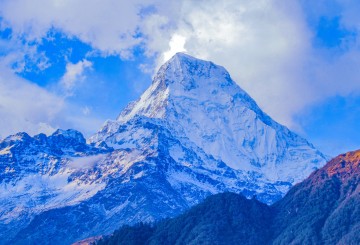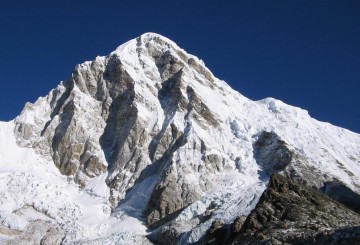Upon arrival in the Tribhuvan International Airport (TIA), a representative from Himalayan Sherpa Adventure will greet you and help you get to the designated hotel. We will have short sightseeing and dinner around the circuit of Bouddhanath Stupa. Overnight at Hotel Mulberry, Thamel, Kathmandu. (B,D)

Mount Everest is known as “Sagarmatha” in Nepali and “Chomolungma” in Tibetan – meaning “Mother of Mountains”. The southern face lies in Nepal whereas the northern face is in Tibet. Mount Everest is named after Sir George Everest in his honor who was the lead surveyor in 1856. Sir George Everest, a Welsch surveyor, was the surveyor general of India for thirteen years. Many unsuccessful attempts have been made after Sir George until in 1953 when Sir Edmund Hillary and Tenzing Norgay Sherpa were the first to reach the summit, jointly holding the record via the southern route. Since then, thousands of climbers have gone on to try this feat.
Mount Everest is known as “Sagarmatha” in Nepali and “Chomolungma” in Tibetan – meaning “Mother of Mountains”. The southern face lies in Nepal whereas the northern face is in Tibet. Mount Everest is named after Sir George Everest in his honor who was the lead surveyor in 1856. Sir George Everest, a Welsch surveyor, was the surveyor general of India for thirteen years. Many unsuccessful attempts have been made after Sir George until in 1953 when Sir Edmund Hillary and Tenzing Norgay Sherpa were the first to reach the summit, jointly holding the record via the southern route. Since then, thousands of climbers have gone on to try this feat.
Our expeditions and treks are partnered with “Altitude Air” helicopters. Their fleet will help us provide necessary supplies like food and climbing equipment directly to the Base Camp. Altitude Air will also provide us with uninterrupted and fast response if any rescue or evacuation services are needed which is very crucial. Today's climbing facility is much better than how it was in 1953, so we are always finding ways to bring comfort to our climbers. Your success is our success and that is what we strive for.
Fitness is a key factor while preparing for Everest summit but that is not all. Respecting nature, listening to your guides and proper discipline is required to summit Everest. You can have all the right gear with you but if you don't respect nature or go against your guide's decision, then the result can get pretty bad instantly. This is why we prefer climbers who have previously climbed 6000 to 7000 meter mountains because they know the conditions up in high altitude. A climber needs to prepare for over a year if they are serious about climbing Mount Everest. Proper exercises and training in high altitude for months is required before attempting Everest. With the right fitness level and a positive mindset of a climber, our adventurous company can assist you in your Everest dreams.
-
Day 1 - Arrival in Kathmandu
-
Day 2 : Sightseeing in Kathmandu and equipment check
Our guide will check your equipment in the morning to see if everything is fine. We will then start our site seeing tour, heading to at least 3 major attractions in Kathmandu. Our sightseeing starts in the morning and should finish around 3 pm. Some major sightseeing places are Pashupatinath, Boudhanath, Swayambhunath, Kathmandu Durbar square etc. You will have the rest of the day free and also a chance to do any last minute shopping before your trek. Overnight in Hotel Mulberry. (B)
-
Day 3 – Briefing / Preparation for permits and expedition.
During the preparation we will work out for permits, equipment checking with guides, shopping for personal food for the expedition. Your tour leader will prepare you for the expedition; he will check everyone's necessary equipment, as Kathmandu is the last opportunity to buy anything missing. You will also get introduced with expedition members and guides. (Overnight at Hotel Mulberry B, B)
-
Day 4: Fly to Lukla (2,860m) –(40 min flight) & trek to Phakding (2,610 m) 3/4 walking hours
We pick you from your hotel early in the morning and head towards Kathmandu domestic airport. You will have a short, 40 min flight to Lukla from Kathmandu. The rest of the crew, including the assistant guide and porter awaits you at the Lukla airport. Upon reaching Lukla, we have introductions with the rest of the team and have tea/ coffee while watching the amazing landings and take-offs at the Lukla airport. Once everything is set up, we start our trek towards Phakding. It will be an easy journey today and you will soon notice that the Everest region is totally different from Kathmandu or anything that you have seen. We get to experience the Sherpa culture and villages of the Everest region along the way and our experienced guide will be there to share information about it. We will make a short stop for lunch midway. After reaching Phakding, our team will help you with your rooms and during dinner, our guide will brief you about your tomorrow’s program. Overnight in Sherpa Shangrila Resort. (B, D)
-
Day 5: Trek to Namche Bazaar (3,440 m) 5/6 hours walk
After breakfast, we pack our belongings and start our trek towards Namche. Today will be a considerably longer hike but each step will bring us closer to the Himalayas. Our trail goes through pine, fir and juniper forests, as well as cross the Dudh Koshi river multiple times via a hanging suspension bridge which you will soon see all over the Everest region. We will also come across a view point where you can see Mt. Everest if the weather is clear! This will be the first place that you can see Mt Everest from without going up higher. We will make a stop for lunch in the middle of the day. The last suspension bridge that we cross is called the Hillary Bridge, which is also the highest bridge and from here we take the uphill that leads us to Namche. Overnight in Hotel Namche. (B, D)
-
Day 6: Acclimatization at Namche Bazaar (3,440m)
Today, we set up a program to visit Hotel Everest View up in Syangboche from where we can see Mt Everest and other high peaks but most importantly we set up this activity to help us with acclimatization. We will also have our lunch there in the hotel. This program should take us around 4 hours to complete. After returning back to Namche, you are free to explore the quaint and buzzy village of Namche. Namche Bazaar offers coffee shops, salon, restaurants, shopping etc. At dinner, our guide will give you more information about your next day. Overnight in Hotel Namche. (B, D)
-
Day 7: Trek to Tengboche (3,867m) -5/6 walking hours
We trek towards Tengboche Monastery, which is the oldest monastery of Everest region and holds a significant value among the locals. Our trek will be accompanied by beautiful views of Ama Dablam on the right until we descend down to Phunkitenga river where we will stop for lunch. After a break, we climb up to Tengboche where we will be staying overnight. The monastery is located in an ideal place surrounded 360 degrees by the Himalayas. We can view Mt Everest, Nuptse, Lhotse, Ama Dablam and Thamserku. Overnight in Tengboche Lodge. (B, D)
-
Day 8: Trek to Dingboche(4,410 m) - 5/6 walking hours
Today we begin our trek downhill steeply through thick forests of birch, conifer and rhododendron on an easy trail. We will pass through several typical villages, Mani walls, and several Chortens. It is a beautiful village located directly opposite to Mt. Ama Dablam provides us stunning views of the peak. (Overnight at Snowland – B, D)
-
Day 9: Acclimatization at Dingboche( 4,410m)
Acclimatization is very important as the sudden rise in high altitude might cause trekkers high altitude sickness and respiratory problems. To utilize this day we will have short hikes to higher altitudes to adapt ourselves to the heights. On the way we can see the tremendous views of majestic peaks like Mt. Everest, Makalu, Lhotse, Cho-Oyu, Island peak, Ama Dablam, Taboche and many mighty peaks. (Overnight at Snowland – B, D)
-
Day 10: Trek to Lobuche (4,940 m) - 5/6 walking hours
From Dingboche the trail continues up the valley towards the moraine of the Khumbu glacier. At Dughla the trail goes directly up the terminal moraine of the Khumbu Glacier before turning left just past the Climber and Sherpa memorial. From the memorial the route descends a little and follows the western side of the valley to Lobuche. (Overnight at Oxygen Lodge – B,D)
-
Day 11: Trek to Everest Base Camp (5,364 m) - 5/6 walking hours
After breakfast we will head towards the Everest Base Camp. Our trail leads us onto the moraine of the Khumbu Glacier and becomes quite vague, weaving between mounds of rubble and eventually reaching base camp near the foot of the Khumbu Icefall. (Overnight at Camp)
-
Day 12-57: Climbing period of Mt. Everest – South (8,749 m) and back to Base Camp (5,364 m)
We will spend several days in climbing training practices with adequate days for proper acclimatization. After spending some days for acclimatization and exercise we will be taken to the high camps closer to the summit. Our climbing guides will set up additional camps above the base camp. A route will already be established by our climbing crews with ropes and ladders to Camp I. We will engage in climbing training practices and slowly head towards Camp II. After several days of uphill and downhill trekking, we will climb up the Lhotse Face to reach Camp 3. From where we will have to use oxygen as we head towards Camp IV on the South Col. Weather can change at any time so taking weather conditions into consideration we will overcome several technical climbing sections and climb to the summit of Mt. Everest - South. From the summit, we can enjoy great views of Kanchenjunga in the east to Shisapangma in the west and all the peaks of the Khumbu region right below us. We will spend a short time at the summit to enjoy the achievement of our lifetime. After an incredible adventure and overwhelming experience we will head back safely towards Base Camp.
-
Day 58: Cleaning up Base Camp
After huge success we will head back to base camp. After we reach base camp we will check each member’s health, and clean up the Base Camp and leaving nothing except your foot prints and memory.
-
Day 59: Trek back to Pangboche (3,985 m) 5/6 walking hours
Today we will climb gradually to the village of Pangboche. If you prefer to have a shorter walk then we can walk to the viewpoint above Pangboche village and also visit the Gompa(small monastery).
-
Day 60: Trek back to Namche Bazaar (3,440 m) 5/6 walking hours
After breakfast at Pangboche, we begin a gradually descend journey to reach Namche Bazaar. We will enjoy a pleasant walk as we trek back to Namche Bazaar. ( Hotel Namche – B,D)
-
Day 61: Trek Back to Phakding (2,610 m) – 5/6 walking hours
Today our walk will consist of mostly downhills and an easy trek to Phakding. After climbing Island Peak, these trails will feel much easier. We stop for lunch in Monjo where the serene sounds of the Dudh Koshi river are very peaceful and relaxing. After lunch, we continue towards Phakding. Overnight in Sherpa Shangrila Resort. (B, D)
-
Day 62: Trek back to Lukla( 2,860 m) -2/3 walking hours
It is the last day of our trek and also an easy walk to Lukla. After breakfast, we slowly start walking towards Lukla reminiscing about all the memories we’ve made along our journey. Our guide will have already arranged and reconfirmed your flight schedule for tomorrow. After reaching Lukla, we will have a chance to rest and then meet with the entire trekking crew for dinner. Our team, including porters, assistant guide and guide will join you for dinner and bid farewell. By now, you will have also noticed that all our teams are not only professionals in what they do, but they are also great entertainers! We will celebrate our last night by dancing to some Nepali tunes. Overnight in Hikers Inn Lodge. (B, D)
-
Day 63: Fly Lukla to Kathmandu by morning flight and free day in Kathmandu
We have a morning flight to catch and our team will help you till the airport. Himalayan Sherpa Adventure representative will be waiting for you in Kathmandu’s domestic airport. We will bring you back to your hotel and you will have the rest of the day free. Overnight in Hotel Mulberry. (B)
-
Day 64: Free days in Kathmandu
......
-
Day 65: Final Departure.
We bid final farewell and drop you to the airport for your departure. (B)
What's Included ?
- All airport and hotel transfers
- 3 nights of hotel stay in Kathmandu on Bed & Breakfast basis
- Professionally trained and experienced tour guide and assistant guides
- Welcome/or Farewell Dinner
- Transportation in our private company vehicle
- Entrance permit and fees for all the Heritage sites
- All government and local taxes
What's Excluded ?
- Lunch and Dinner in Kathmandu
- Tips for guides and drivers
- Personal expenses
- Personal Insurance– travel and rescue insurance
- Airfare for international flights to and from Kathmandu
- Recuse servicies
- Nepalese visa fee
- Services not mentioned in the “Included” section
-
1. What is the best time to visit the Everest region?
- The most popular months for trekking in the Everest region are March, April, May and September, October, November, as these months are when the conditions are at their best. The spring and autumn tend to offer reasonable temperatures, clear skies, little to no rain and less chance of problematic snowfall. The average temperature around this time can range from a high around 20 degree Celsius during the day to -15 degree Celsius at night. - December, January and February have colder temperatures and are less frequently travelled, but this should not deter you from making your trip to the Everest region during these months. The weather is very clear allowing you to see all the majestic mountains and most of the lodges and tea houses are open during this time. Best of all, you don’t have to deal with crowds and will have all the views to yourself!
-
2. How do you get to the Everest region?
- The most popular way to travel the Everest region is by a short 30 minutes flight from Kathmandu to Lukla. Lukla is the starting point for all treks in this region.- There is an alternative way to reach the Everest region by driving from Kathmandu 12 hours to the village of Solu and walking for 2 additional days to reach Lukla.
-
3. What is the luggage weight limit on flights to the Everest region? Do we need to use duffle bags instead of regular luggage (with frame and roller)?
- The luggage weight limit on Everest flights are 15 kgs luggage and 5 kgs of hand carry (personal backpack). Before you start your trek, any unwanted luggages can be left in your hotel in Kathmandu. They will happily store it for you as you will be using the same hotel once your trek ends. - Yes, Duffle bags are better while in the trek because it can store more luggages and helps our porter to manage his load better.
-
4. Where will we be staying during our trek and what to expect from the accommodations? What kind of meals should I expect during the trek?
- We use only the best available accommodations during our treks which can include hotels, lodges and tea houses. Through our decades of experience, we have selected these places for their hygiene, amenities and client satisfaction. - During your trek the food choices might be more limited but you can always expect to find staples such as Dal Bhat, driving from Kathmandu 12 hours to the village of Solu and walking for 2 additional days to reach Lukla. 3. What is the luggage weight limit on flights to the Everest region? Do we need to use duffle bags instead of regular luggage (with frame and roller)? - The luggage weight limit on Everest flights are 15 kgs luggage and 5 kgs of hand carry (personal backpack). Before you start your trek, any unwanted luggages can be left in your hotel in Kathmandu. They will happily store it for you as you will be using the same hotel once your trek ends. - Yes, Duffle bags are better while in the trek because it can store more luggages and helps our porter to manage his load better. 4. Where will we be staying during our trek and what to expect from the accommodations? What kind of meals should I expect during the trek? - We use only the best available accommodations during our treks which can include hotels, lodges and tea houses. Through our decades of experience, we have selected these places for their hygiene, amenities and client satisfaction. - During your trek the food choices might be more limited but you can always expect to find staples such as Dal Bhat, Noodles/ Chowmein, Fried rice, Sandwiches, Soups and French Fries. You can also find some vegetarian options as well. Another common popular Nepali dish is Momo (dumpling) which is very popular among the locals. Make sure to try one when you can.
-
5. Do we need to bring towel, toilet paper? Does all the hotels/ lodges on the route provide bathroom, hot shower and toiletries?
- Not all hotels/ lodges provide the above following. We recommend all our clients to bring their own toiletries. Some hotels will provide attached bathroom with hot shower in your room while others will just provide a common bathroom. - The Everest region is still a remote area with no proper road access. Hence, most of the goods and supplies in this region have to be flown via air. This makes it very difficult and expensive to provide all the facilities. Some of the lodges in the lower Everest region will provide most of the facilities but you need to understand that the higher you trek, the lesser facilities will be available.
-
Do we need to bring a sleeping bag and how warm will the room be?
- Up until Namche, you will not be needing a sleeping bag. You will only need a sleeping bag in the higher elevation like around Everest base camp. Some lodges will give extra blankets but having your own sleeping bag is better. Your porter will put your sleeping bags in the duffle bags that he carries. If you don’t have a sleeping bag, you can always buy one in Kathmandu or rent through our company.
-
7. If we bring water bottle, where can we refill clean drinkable water?
- Unfortunately, the Everest region does not have a system of refilling clean drinkable water. The only way to do so is to purchase a bottle mineral water and then to pour it onto your water bottle. Purchasing mineral water is very easy in the Everest region but please know that the higher you go, so will the price of water. Also, please remember to recycle the plastic bottle or to give it to your guide or the lodge who will recycle it. It is not advisable to drink tap water. Please only use mineral bottle water or boiling water.
-
8. What about Laundry services and ATM’s along the trek route? Do they accept US dollar during the trek?
- Laundry machines are very rare in the mountains so please check with your guide for this services. Trekkers usually will not have big laundry during the trek and the little items such as socks and towels can be hand washed and later dried in the sun or by the fire. Most trekkers will only do their laundry once they are back in the capital Kathmandu where you can find plenty of Laundry services. 7. If we bring water bottle, where can we refill clean drinkable water? - Unfortunately, the Everest region does not have a system of refilling clean drinkable water. The only way to do so is to purchase a bottle mineral water and then to pour it onto your water bottle. Purchasing mineral water is very easy in the Everest region but please know that the higher you go, so will the price of water. Also, please remember to recycle the plastic bottle or to give it to your guide or the lodge who will recycle it. It is not advisable to drink tap water. Please only use mineral bottle water or boiling water. 8. What about Laundry services and ATM’s along the trek route? Do they accept US dollar during the trek? - Laundry machines are very rare in the mountains so please check with your guide for this services. Trekkers usually will not have big laundry during the trek and the little items such as socks and towels can be hand washed and later dried in the sun or by the fire. Most trekkers will only do their laundry once they are back in the capital Kathmandu where you can find plenty of Laundry services. - ATM’s are also available but only in certain places. So we urge you to use the ATM’s in Kathmandu where there are plenty and also their service fee will be comparatively less than in the mountains. - Yes they accept US dollar in the mountains but you will get a better deal if you exchange it in Kathmandu in the money exchange shops.
-
9. Is Internet/ Phone available up in the mountains? How do I charge my electronics?
- Internet is available but you will need to purchase it from the lodges. If you have bought a Nepali sim card then depending on the subscription, you can also get mobile data services but this is not a guarantee in all areas of the mountain. If your trek is above 4,000 meters high, we will send a company satellite phone along with the guide just in case of an emergency. - We recommend that our clients bring a power bank with them as electricity is limited especially at higher altitudes. We also found out through some of our clients that the solar powered power bank works well during the trek. So we recommend to have both or at least a power bank. Some lodges will provide free electricity for you to charge your power bank and in higher altitudes you may have to pay to charge your electronics. urge you to use the ATM’s in Kathmandu where there are plenty and also their service fee will be comparatively less than in the mountains. - Yes they accept US dollar in the mountains but you will get a better deal if you exchange it in Kathmandu in the money exchange shops. 9. Is Internet/ Phone available up in the mountains? How do I charge my electronics? - Internet is available but you will need to purchase it from the lodges. If you have bought a Nepali sim card then depending on the subscription, you can also get mobile data services but this is not a guarantee in all areas of the mountain. If your trek is above 4,000 meters high, we will send a company satellite phone along with the guide just in case of an emergency. - We recommend that our clients bring a power bank with them as electricity is limited especially at higher altitudes. We also found out through some of our clients that the solar powered power bank works well during the trek. So we recommend to have both or at least a power bank. Some lodges will provide free electricity for you to charge your power bank and in higher altitudes you may have to pay to charge your electronics. - Tip: Batteries will lose their charge fast in colder temperatures. So we recommend tucking your electronics in your blanket/ sleeping bag or you might find your phone/ camera dead in the morning.
-
10. How common is Altitude Sickness? What to do if I get one?
- While trekking in the Himalayas, there is always a chance of dealing with Altitude sickness, but there are many things that you can do to minimize the risks. Our itinerary programs are carefully designed to ascend slowly and to provide proper acclimatization activities. Our experienced guides will remind you to stay hydrated and also look out for any early signs of distress. - Our guides receive training every year on Altitude sickness. If they think that you are showing symptoms of Altitude sickness, they might perform some simple diagnostic tests such as checking your oxygen level or asking you to walk in a straight line. The most effective treatment for altitude sickness is to descend to a lower elevation. However, in severe cases or certain conditions where descending is not possible our guides will coordinate an air evacuation as soon as possible. - Note: All of our guides are trained to administer oxygen. Every trek that goes above 4,000 meters will be equipped with an oxygen cylinder and a satellite phone incase of an emergency.
-
11. Do we need to carry travel insurance?
- Yes, travel insurance is mandatory while trekking with us. Please ensure that your insurance covers air evacuation service. While trekking to the Himalayas, there is a risk of dealing with an altitude sickness. In case of such emergencies, your air evacuation insurance will help you cover the cost or else the trekker will have to solely bear the costs. Our treks are organized in a very thoughtful manner so you will not have to face such adversities, but we always want our guests to travel in a peace of mind.
-
12. Do I need guide and porters for my trek?
- Yes, having a trekking guide and porter is necessary part of your journey. We have our team of guides and porters who work with us every season. Guides and Porters are an integral part of what we do so they are a vital team member. All of our guides are trained every year on leadership skills and basic first aid skills. Our porters are treated fair by limiting the weight they carry and paying well for the job they do. Trekking in high altitude requires good support team and it is very important to have trekking guide and porter along with you. We treat our porters fairly by only allowing 24 kgs of maximum load and limit per trekker a maximum of 12 kgs (26 lbs) to be carried. 1 porter can carry the load of 2 clients.
-
13. Do I have to tip my guide/ porter?
- Tipping culture is not mandatory but highly appreciated. Please keep in mind that our guides/porters will not ask you for anything– including tips. However, if you think that they have performed well while doing their job, and earn your appreciation or a "thank you", you may by all means tip them any amount you find reasonable. Typical guidelines on tipping the guides are $5 - $10 per day and for porters $3 - $5 per day. Most clients often leave tips in the last night of their trek.

-

hats/beanie
-

Sunglasses
-

Scarf/Buff.
-

Candies/sweets
-

Headlights.
-

Lip balm
-

Sunscreen
-

Helmet.
-

A warm fleece
-

fewT shirts/ long and short sleeve shirts.
-

Daun Jacket
-

Windstopper jacket
-

ponchos/Raincoat
-
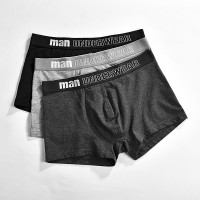
A few pieces innerwear.
-

few pairs ski underwear
-

windproof trouser
-

trekking trouser / Hiking Trouser /leggins
-

pairs of Trekking Socks
-

pairs woolen socks.
-

Slipper & Sandals
-

trekking shoes
-

one comfortable shoes
-

thin gloves & think gloves
-

backpack / Rucksack (waterproof)
-

Sleeping bag -10* C
-

Duffel bag
-

Water bottle
-

Pocket knife
-

thermos
-

Crampons.
-

Ice Axe.
-

Climbing harness.
-
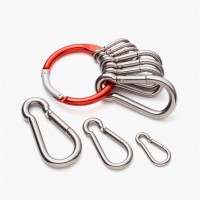
carabiner.
-

Figure Eight.
-

A few pairs prusiks.
-
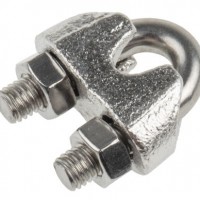
Rope clamp.
-

Robust shoes for climbing.
-

Towel & hand towel
-

Toiletries
-

Trekking poles

You May Also Like




